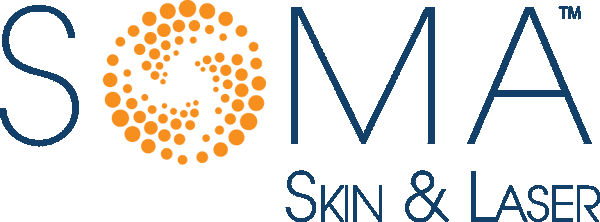CALL 973-763-7546 For Your Rosacea Consult Today
About Rosacea (Acne Rosacea)
Rosacea (Acne Rosacea) is an inflammatory skin disorder that affects the blood vessels and pilosebaceous units of the face, specifically the central areas. The lateral aspects of the cheeks and forehead are typically spared. Rosacea appears as a background of erythema and telangiectasias (fine blood vessels), usually with superimposed papules and pustules developing gradually over time. Flushing usually precedes permanent erythema. Comedones are not found, distinguishing it from acne vulgaris, though overlap with acne vulgaris is sometimes seen. Onset is in middle-age, also distinguishing this condition from acne vulgaris.
What else can look like rosacea?
The primary differential diagnosis for acne rosacea is acne vulgaris. Acne rosacea begins in middle age, lacks comedones, has background erythema and telangiectasias, and a characteristic central facial distribution. Seborrheic dermatitis, systemic lupus erythematosus, or a photodermatoses can resemble rosacea if pustules are lacking. The flushing sometimes seen in early acne rosacea can be confused with carcinoid syndrome.
Acne rosacea is usually diagnosed clinically based on history and a typical appearance.
What are the treatments for acne rosacea?
Low dose systemic antibiotics, such as tetracycline or erythromycin, are usually used for papules and pustules. Topical metronidazole (e.g. MetroGel) is commonly used, as is topical azelaic acid (e.g. Finacea) and sometimes permethrin. Systemic isotretinoin has been used for resistant disease. Topical steroids should be avoided as the are known to aggravate rosacea. Sun screen should be worn regularly as sunlight is one of many aggravating factors. Telangiectasias and erythema may be responsive to laser treatments or IPL. Triggers of flushing should be avoided. Ocular complications should be referred to an ophthalmologist. Rhinophyma can be treated with electrosection of the hypertrophic tissue or other ablative technique such as CO2 laser. The redness of rosacea is best treated with the Vbeam laser. Medications such as Mirvaso and Rhofade can help on a temporary basis. Microbotox for rosacea has also shown efficacy.
Rhinophyma (enlargement of the nose) an be treated with surgery and laser surgery.
What is the prognosis for acne rosacea?
Acne rosacea, although a chronic disease, can usually be controlled with treatment. Papules, pustules, and sometimes erythema may resolve with antibiotics, but telangiectasias persist unless ablated with a vascular laser or IPL device. Rhinophyma, which is hyperplasia of the sebaceous glands of the nose, develops in some cases. This condition can also affect the chin. Eye complications, ranging from blepharitis to keratitis, are not uncommon in rosacea patients.
Other Resources
National Rosacea Society | International Rosacea Foundation | Acne Rosacea from Dermatology On-Line Journal
